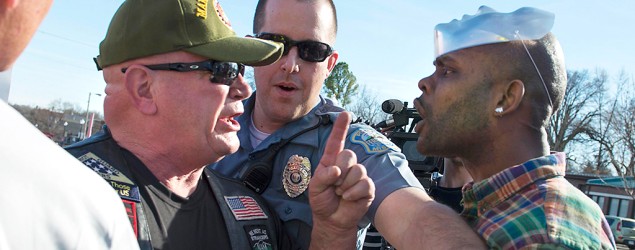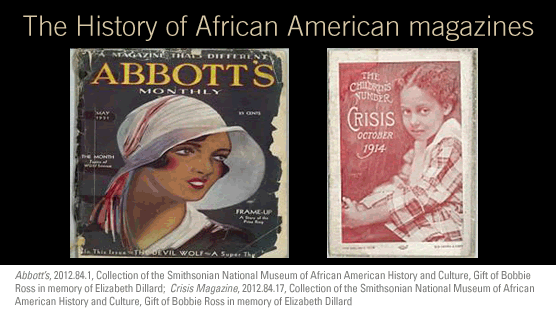
Purvi Patel, who was sentenced to 20 years in prison for feticide and neglect of a dependent on Monday, at the St. Joseph County Courthouse in South Bend, Ind. Credit Robert Franklin/Associated Press, via South Bend Tribune
By EMILY BAZELONAPRIL 1, 2015
It’s tempting to simply look away from Patel’s case on the grounds that it is an outlier, however tragic. But it demonstrates how unsparing the criminal-justice system can be to women whose pregnancies end in (or otherwise involve) suspicious circumstances. If one lesson of the case is about the legal risk of inducing your own late-term abortion, another is about the peril of trying to get medical help when you are bleeding and in pain.
Last July, Patel went to an emergency room in South Bend, Ind., where she told the doctors she had a miscarriage. Asked what she had done with the fetal remains, she said the baby was stillborn and, not knowing what else to do, she put the body in a bag and left it in a Dumpster. The police were able to recover the body. Later, they also found text messages in which Patel told a friend about ordering pills to induce an abortion from a pharmacy in Hong Kong and about taking the medication. Three days later, she texted the same friend, “Just lost the baby.”
Patel was charged with felony child neglect and feticide, based on the supposed self-abortion. Asked by Slate’s Leon Neyfakh about the apparent contradiction between the charges, the St. Joseph County prosecutor, Ken Cotter, said that a person can be guilty of feticide under Indiana law for deliberately trying to end a pregnancy, even if the fetus survives. As Neyfakh points out, the Indiana feticide statute exempts legal abortions — but while the pills Patel took are available in the United States with a prescription, it’s against the law to order them online, as she apparently did. And so she was prosecuted for taking the medication as well as for letting her baby die after the self-abortion failed.
If this case were only about a woman who clearly gave birth to a live baby and then killed her child, it would be clear cut. There is a line between pregnancy and birth, and once it is crossed, the state has just as much at stake in protecting the life of a newborn as it does in protecting the life of anyone else. But the evidence that Patel’s baby was born alive is sharply contested. The pathologist who testified for the defense, Shaku Teas, said the baby was stillborn. Teas told the court the fetus was at 23 or 24 weeks gestation and that its lungs weren’t developed enough to breathe. (Here’s more support for this position.)
But the pathologist for the prosecution, Joseph Prahlow, testified that the fetus was further along than that — at 25 to 30 weeks gestation, which is past the point of viability — and was born alive. News reports from the trial emphasized Prahlow’s use of a “lung float test” in making his determination. The idea behind the test — which dates from the 17th century — is that if the lungs float in water, the baby took at least one breath. If they sink, then the fetus died before leaving the womb.
If that sounds like the old test for witchcraft — if an accused witch floated, she was judged guilty; if she sank, she was innocent — it’s also about as old and nearly as discredited. “The lung float test was disproven over 100 years ago as an indicator for live birth,” Gregory J. Davis, assistant state medical examiner for Kentucky and a professor of pathology and lab medicine at the University of Kentucky, told me. “It’s just not valid.”
When I called Prahlow, who is a professor of pathology and lab medicine at the Indiana University School of Medicine, South Bend, and a former president of the National Association of Medical Examiners, he conceded that “the lung float test, in and of itself, is unreliable.” Still, Prahlow argued, the lung test could “provide corroborating evidence, in light of additional findings.”
Prahlow enumerated those findings to me as he had to the Patel jury: The weight of the lungs and the other organs, the inflation of the lungs and the air sacs, the presence of blood in the lung vessels and the “relative maturity” of the lungs. Put these findings together, along with a lack of blood in the baby’s body, and “I can’t come up with any other explanation other than that this baby was born alive,” Prahlow said.
But Davis was unconvinced. He said that while he knows and respects Prahlow, his conclusion was “dead wrong.” Prahlow’s list of findings are still “totally nonspecific” as to whether Patel’s baby died in utero or after being born, Davis said. “Or even if we agree hypothetically that the baby took a breath, that doesn’t mean Ms. Patel did anything wrong. What if she was scared and bleeding herself, and she didn’t clamp the cord in time, because she didn’t know how, and the baby died?”
To Davis, the forensics in this case can’t determine whether Patel was culpable any more than looking at a body that fell from a high building can determine whether the fall was a suicide, an accident or a homicide. “Sometimes the only answer you can give as a scientist is ‘I don’t know,’” he said.
Whatever happened to Patel and her baby at the point of delivery, it’s hard to imagine that either the prosecution or the judge at sentencing would have come down as hard on her if they weren’t sure she’d tried to induce her own illegal abortion. And this is where Patel’s case moves from a fight over birth to a fight over pregnancy.
This is the first case I can find in which a state-level feticide law has been successfully used to punish a woman for trying to have an abortion. Women have been charged with other crimes after taking abortion pills without a prescription, but the feticide charge appears to be Indiana’s idea. It could spread, though: About 38 states have fetal homicide laws in place.
The common justification for these measures is that they protect pregnant women against unscrupulous abortion providers or abusive partners. Indiana’s feticide law was intended to apply to the knowing or intentional termination of another’s pregnancy, its history shows. Abortion opponents, who support feticide laws, have given repeated assurances that their aim is not to put pregnant women in prison. “We do not think women should be criminalized,” Marjorie Dannenfelser, president of the anti-abortion group Susan B. Anthony List told NPR in 2012 after a woman in Idaho was prosecuted for a self-induced abortion, also with pills she ordered online. “Criminal sanctions or any kind of sanctions are appropriate for abortionists and not for women.”
Nevertheless, prosecutions like these are growing more frequent. In Indiana, before Purvi Patel, there was Bei Bei Shuai, a Chinese immigrant who tried to commit suicide while pregnant and was also charged with feticide. The charges against Shuai were dropped in 2013 after she pleaded guilty to a lesser charge and spent a year in custody. In Iowa, Christine Taylor faced charges for attempted fetal homicide after falling down the stairs, going to the hospital and being reported for trying to end her pregnancy.
Continue reading the main story
The charges in Taylor’s case were dropped, too. But in an Op-Ed in The Times last year, Lynn M. Paltrow, executive director of National Advocates for Pregnant Women, and Jeanne Flavin, a sociology professor at Fordham University, detailed similar cases. A study they conducted, surveying cases since 1973, turned up hundreds of arrests of women for actions taken during their own pregnancies that the authorities deemed harmful to their fetuses.
Many of the cases involved women who took drugs like cocaine and methamphetamines during pregnancy. But they also included women who refused cesarean sections their doctors recommended — and, lately, women who took abortion pills they ordered online. Last September, I wrote about a mother in Pennsylvania, Jennifer Whalen, who went to prison for helping her 16-year-old daughter do that, even though it was a first-trimester abortion and the girl came to no harm. (Whalen has since been released.)
Patel’s case stands out, for the draconian length of the sentence she received, and for the disturbing image of a baby left in a Dumpster. But it is also part of a pattern. “This case shows how easy it is to sweep up women who’ve had miscarriages and stillbirths into a criminal justice framework,” Paltrow told me. For her, the key question is how to ensure that fewer women become as desperate as Patel must have been about her pregnancy. “Do you think these cases will be less rare if you terrify people and make them criminals?” she said.
Correction: April 2, 2015
An earlier version of this article incorrectly stated that the text of Indiana’s law included the phrase “another’s pregnancy.” That phrase arose from legal interpretations of the statute, but it is not in the statute itself





 by uslegal.com
by uslegal.com




You must be logged in to post a comment.